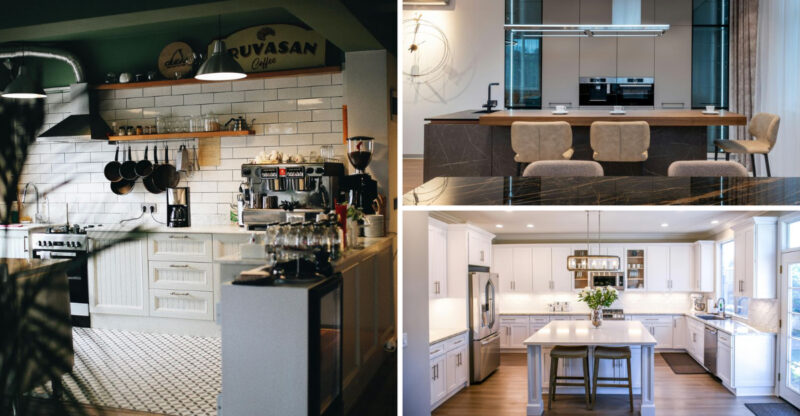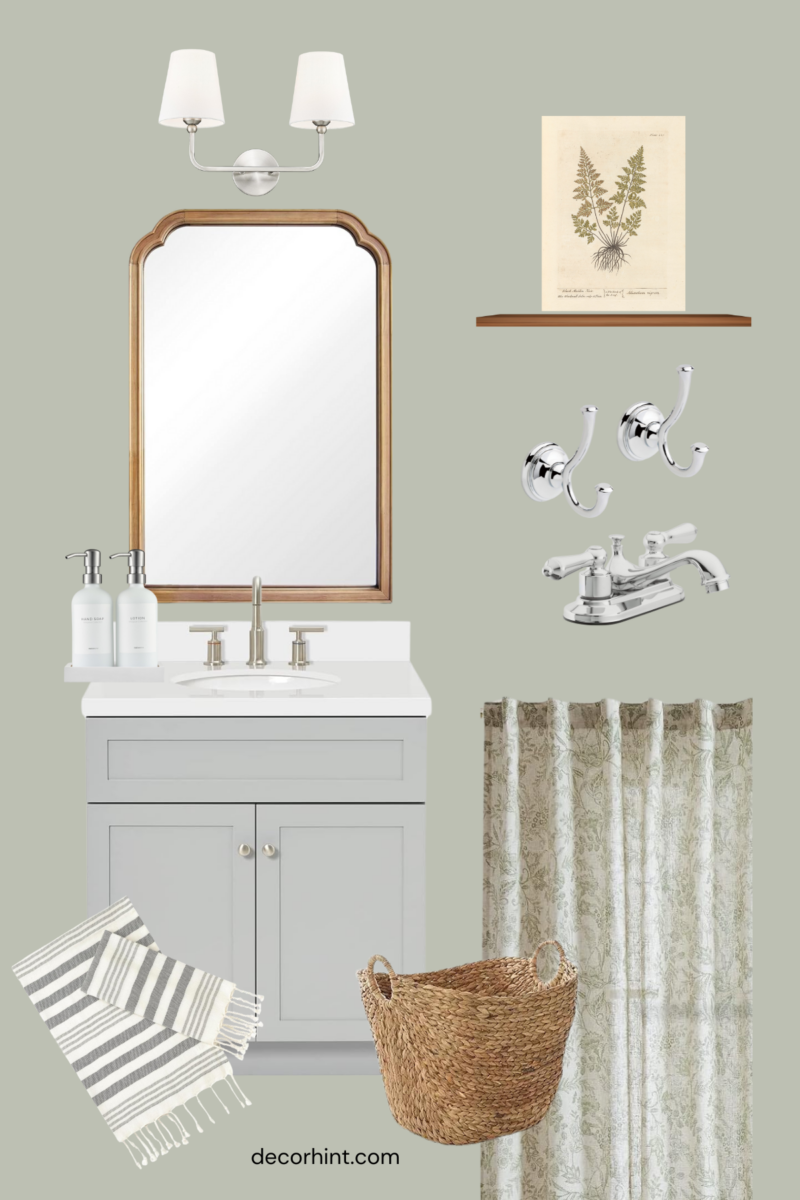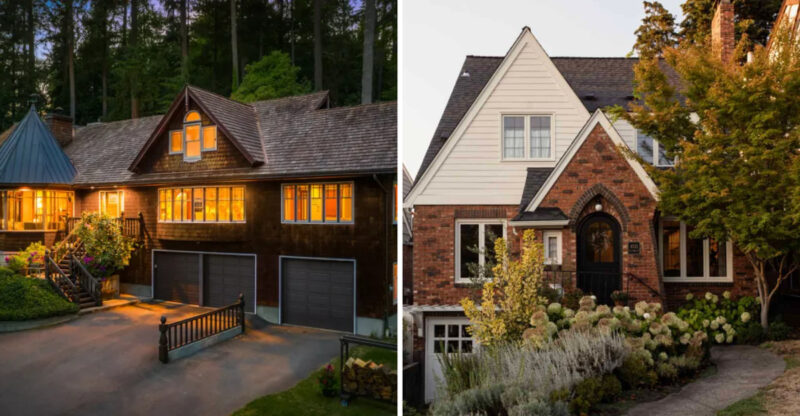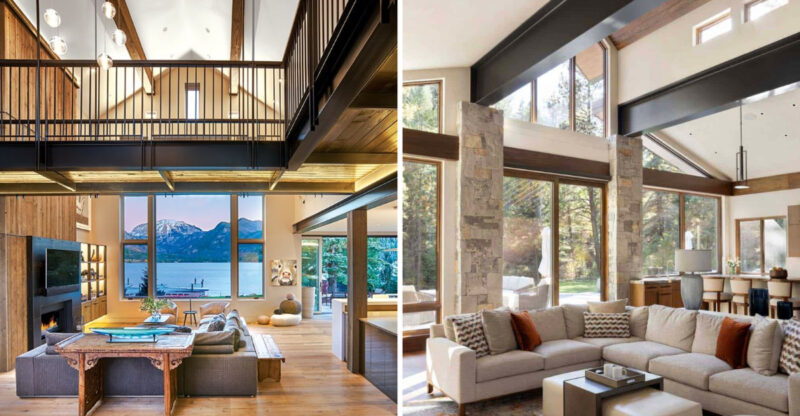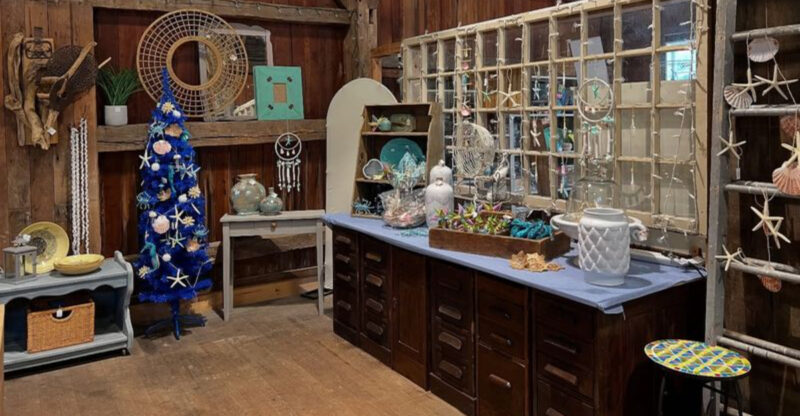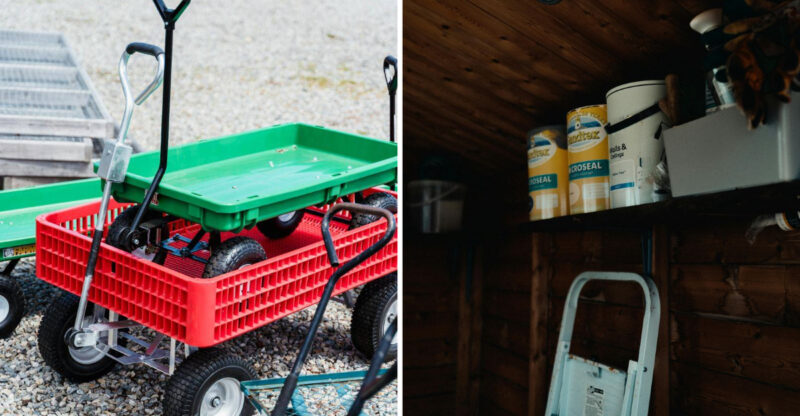Comparing Rustic And Country-Style Kitchens And Their Common Features
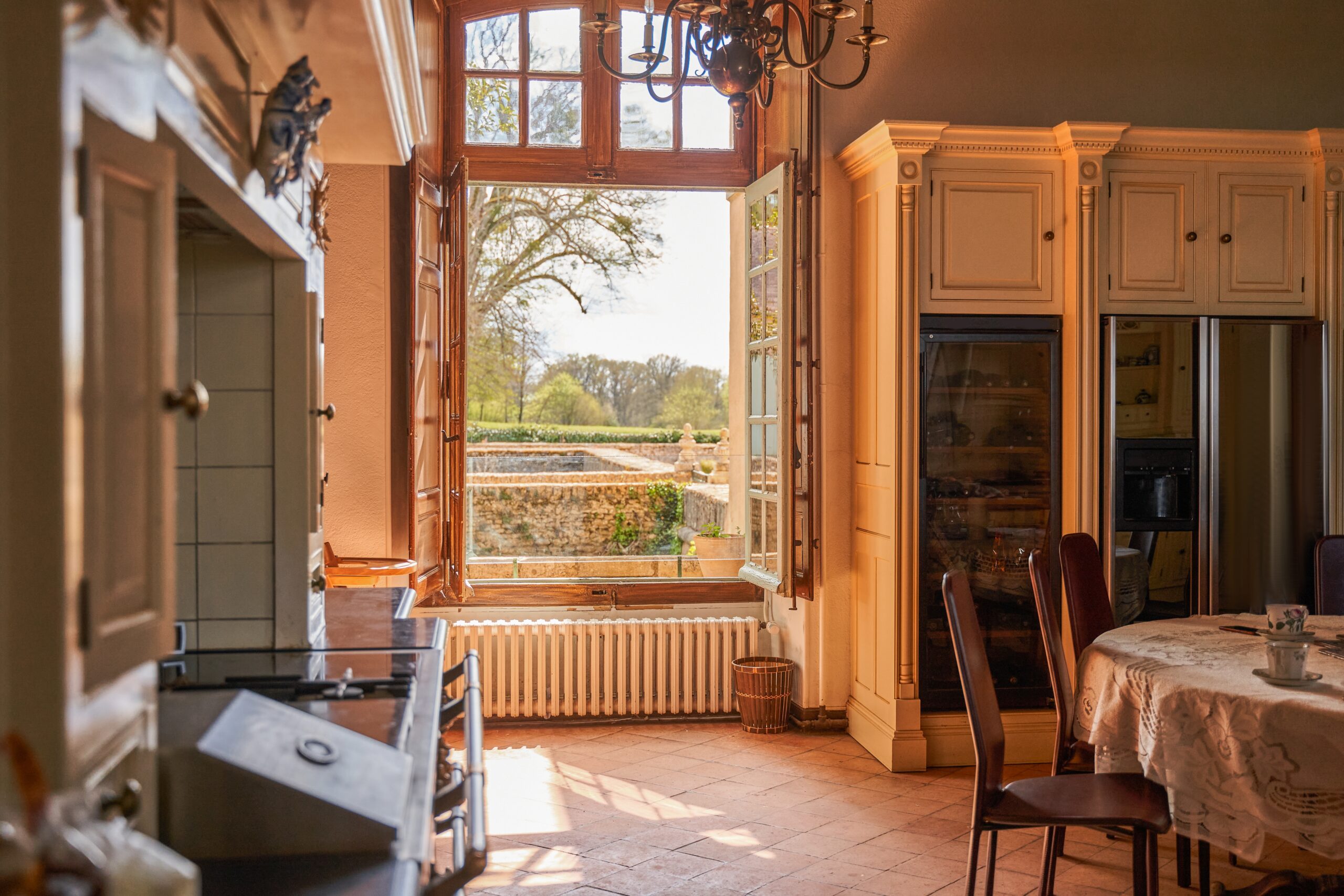
Kitchen design shapes how we experience the heart of our home. Rustic and country-style kitchens remain popular choices for homeowners seeking warmth and character in their cooking spaces.
While these styles share similar cozy vibes, they have distinct characteristics that set them apart. Understanding these differences can help you create a kitchen atmosphere that matches your personal taste.
The content below is provided for informational and inspirational purposes only. Always prioritize safety and consult with professionals for specific advice.
1. Defining Rustic Kitchen Design Characteristics
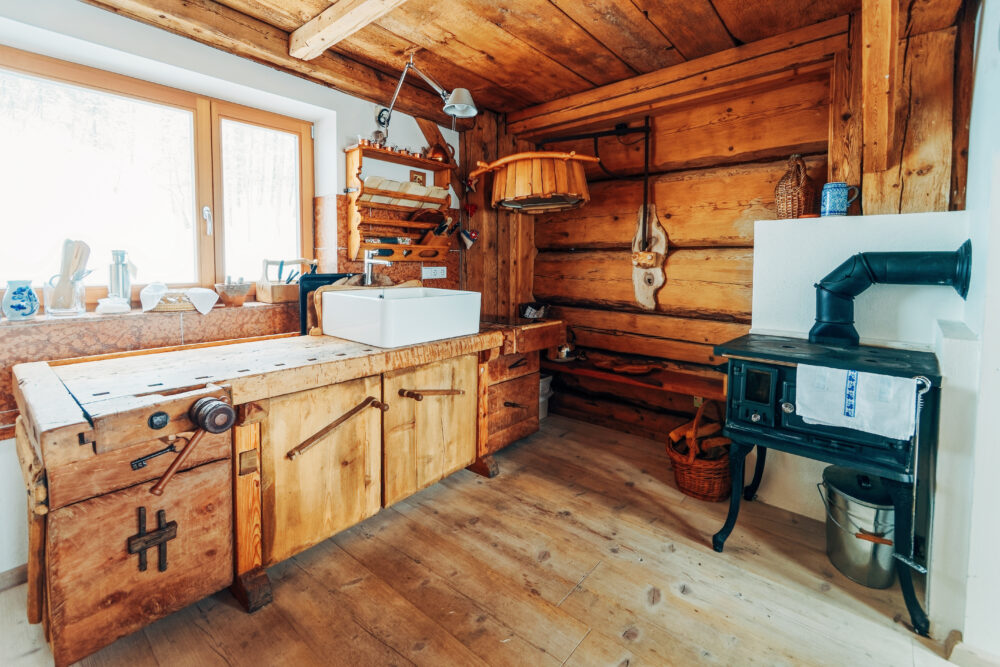
Rough-hewn wooden beams and weathered surfaces create the foundation of rustic kitchen design. These spaces celebrate natural imperfections rather than hiding them.
Stone elements, particularly in flooring or accent walls, add earthy texture. The overall aesthetic leans toward a cabin-like, outdoorsy feel with minimal processing and maximum authenticity in materials.
2. Defining Country-Style Kitchen Design Characteristics
Softer and more decorated than rustic spaces, country kitchens blend comfort with charm. Painted cabinets in cream, light blue, or sage green create a cheerful backdrop for daily activities.
Fabric plays a crucial role through curtains, chair cushions, and tablecloths with gingham or floral patterns. Country kitchens often incorporate collections of pottery, vintage kitchenware, and decorative plates on open shelving.
3. Key Differences Between Rustic And Country-Style Kitchens
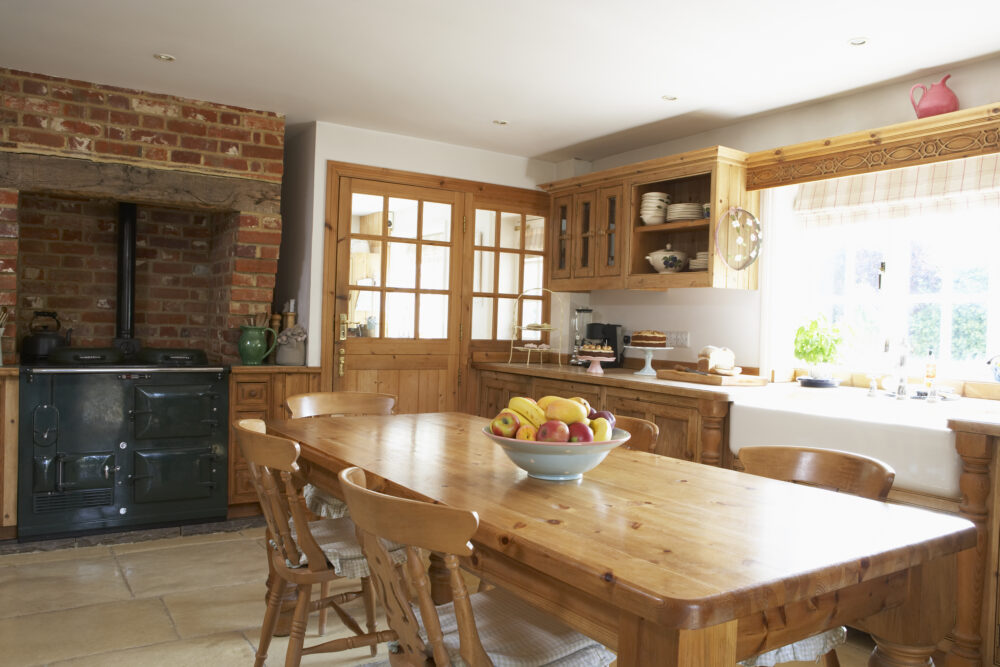
Rustic kitchens embrace ruggedness with unfinished wood and natural stone, while country kitchens favor refinement through painted surfaces and decorative touches.
The color palette differs significantly too – rustic spaces feature earth tones and neutrals, whereas country kitchens incorporate pastels and cheerful hues. Country designs welcome more accessories and fabric elements than their minimalist rustic counterparts.
4. Common Features Shared By Both Styles
Farmhouse sinks stand out as signature elements in both design approaches, offering practical depth and a nostalgic silhouette. Open shelving replaces some upper cabinets, displaying everyday dishes and treasured items.
Wooden tables serve as gathering spots, often showing signs of loving use. Both styles often favor well-worn comfort and spaces that feel lived-in rather than overly polished.
5. Materials Often Used In Rustic And Country-Style Kitchens
Reclaimed barn wood transforms into statement pieces like islands or ceiling treatments in both kitchen styles. Cast iron makes appearances in hardware, lighting fixtures, and cookware displayed as functional decoration.
Copper pots hanging from ceiling racks add warmth and practicality. Natural stone countertops, particularly soapstone or granite with leathered finishes, provide durable work surfaces with character that improves with age.
6. Color Palettes That Suit Rustic And Country-Style Kitchens
Rustic kitchens thrive in warm neutrals – think chestnut browns, deep greens, and stone grays that echo natural landscapes. These earthy tones create a grounding effect that connects indoor spaces with outdoor surroundings.
Country kitchens embrace cheerier palettes including buttermilk yellows, robin’s egg blues, and soft reds. Both styles benefit from avoiding trendy colors in favor of timeless hues that age gracefully alongside well-worn materials.
7. Furniture And Décor Elements Found In Both Styles
Sturdy wooden chairs surround harvest tables where families gather for generations of meals and memories. Vintage-inspired pendant lights hang above islands, casting warm pools of light on food preparation areas.
Woven baskets corral everything from produce to dish towels with practical charm. Antique kitchen tools mounted on walls serve dual purposes as decoration and conversation starters, connecting modern cooking spaces with culinary traditions of the past.
8. How Lighting Influences Rustic And Country-Style Kitchens
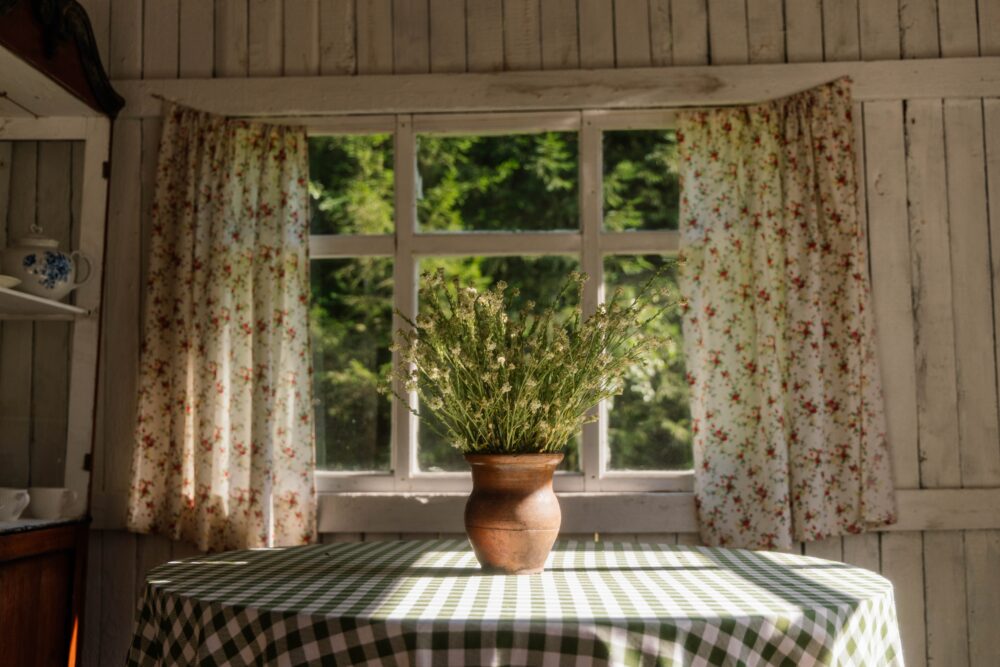
Natural light plays an important role in both kitchen styles, with windows often left undressed or adorned with simple treatments that maximize sunshine. Wrought iron chandeliers with candle-style bulbs create ambient evening illumination with historical character.
Under-cabinet lighting serves practical needs while highlighting textured backsplashes. The warm glow of 2700K bulbs rather than cool fluorescents enhances the cozy atmosphere these kitchens strive to create.
9. Tips For Mixing Rustic And Country-Style Elements In One Space
Balance rough and refined textures by pairing distressed wood beams with painted shiplap walls for visual harmony. Choose one dominant style as your foundation, then incorporate accent pieces from the complementary approach.
Unify disparate elements through consistent hardware finishes throughout the space. Both styles often celebrate imperfection, so natural patina developing over time can enhance the character of your kitchen.
10. Common Mistakes To Avoid With Rustic And Country-Style Kitchens
Overly themed decor like rooster collections or excessive barn stars can tip charming into kitschy territory. Authentic materials matter – avoid vinyl flooring printed to look like wood or plastic laminate mimicking stone.
Balancing function with aesthetics prevents creating beautiful but impractical spaces. Modern conveniences need thoughtful integration rather than elimination. Remember that true rustic and country kitchens evolved organically over time rather than appearing perfectly coordinated overnight.

